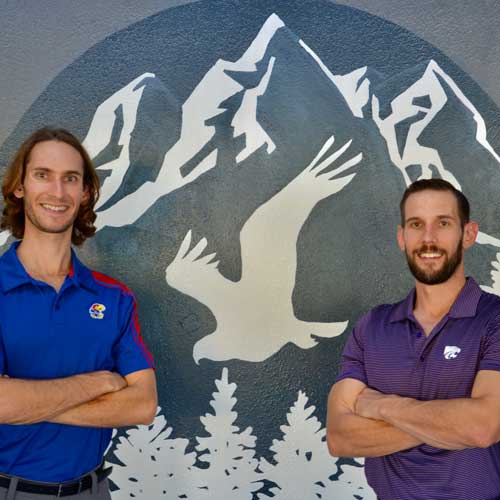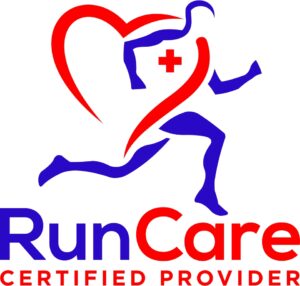
Introduction
Step into a realm where cutting-edge science meets hands-on care. Welcome to another illuminating blog post from WildHawk Physical Therapy. In this exploration, we unravel the dynamic interplay between regenerative medicine and physical therapy, unlocking the potential for maximal healing. Whether you’re recovering from an injury, managing chronic conditions, or seeking optimal well-being, the convergence of these two realms offers a promising avenue for comprehensive rehabilitation.
Understanding Regenerative Medicine: A Paradigm Shift
Regenerative medicine represents a revolutionary paradigm shift in healthcare—a field focused on harnessing the body’s innate ability to heal and regenerate tissues. At its core, regenerative medicine aims to restore structure and function to damaged or degenerated tissues using advanced techniques and interventions. These may include stem cell therapy, platelet-rich plasma (PRP) injections, and other innovative approaches.
The Role of Regenerative Medicine in Healing
- Stem Cell Therapy: Nurturing Regeneration
- Stem cells are unique cells with the remarkable ability to transform into various cell types. In regenerative medicine, stem cell therapy involves the injection of these cells into injured or damaged tissues, promoting repair and regeneration. Stem cells can differentiate into specific cell types, such as muscle, bone, or cartilage, contributing to tissue restoration.
- Platelet-Rich Plasma (PRP): The Healing Elixir
- PRP is derived from the patient’s own blood, processed to concentrate platelets. These platelets are rich in growth factors and bioactive proteins that play a key role in tissue repair. When injected into injured areas, PRP enhances the body’s natural healing processes, accelerating recovery and minimizing inflammation.
- Exosome Therapy: Cellular Messengers
- Exosomes are tiny vesicles released by cells, carrying signaling molecules and genetic material. In regenerative medicine, exosome therapy involves the use of these cellular messengers to modulate inflammation, stimulate cell proliferation, and facilitate tissue regeneration. This emerging approach shows promise in promoting optimal healing.
The Intersection of Regenerative Medicine and Physical Therapy
While regenerative medicine focuses on enhancing the body’s internal healing mechanisms, physical therapy complements this approach by optimizing function, mobility, and overall wellness. The synergy between these two realms creates a powerful framework for maximal healing.
Setting the Stage: Comprehensive Assessment
- Regenerative Medicine Evaluation:
- Before embarking on a regenerative medicine journey, a thorough evaluation by a healthcare provider is essential. This evaluation may include imaging studies, diagnostic tests, and a detailed medical history to determine the suitability of regenerative interventions.
- Physical Therapy Assessment:
- Simultaneously, a physical therapist conducts a comprehensive assessment, evaluating movement patterns, strength, flexibility, and any compensatory strategies. This assessment forms the foundation for tailoring a personalized physical therapy plan that aligns with regenerative interventions.
Introduction to Comprehensive Care: An Individualized Approach
- Regenerative Interventions:
- Stem Cell Therapy Protocols: The administration of stem cell therapy is often part of a structured protocol. Depending on the condition, multiple injections may be recommended over a specified timeframe to optimize the regenerative effects.
- PRP Injections: PRP injections are strategically administered to target areas of tissue damage or degeneration. The frequency and timing of PRP injections may vary based on the specific goals of treatment and individual response.
- Exosome Therapy Integration: In cases where exosome therapy is incorporated, the timing and dosage are carefully considered to enhance its synergistic effects with other regenerative interventions.
- Physical Therapy Integration:
- Customized Exercise Programs: Physical therapists design exercise programs tailored to complement regenerative interventions. These exercises focus on strengthening, flexibility, and functional movements, addressing specific deficits identified during the assessment.
- Joint Mobilization and Manual Therapy: Hands-on techniques, including joint mobilization and manual therapy, are employed to enhance joint mobility, reduce pain, and optimize the biomechanics of movement.
- Progressive Loading Protocols: As individuals undergo regenerative interventions, physical therapists implement progressive loading protocols. This involves gradually increasing the intensity of exercises to promote tissue adaptation and prevent overloading.
- Functional Movement Training: Integrating regenerative interventions with functional movement training ensures that individuals can seamlessly transition from rehabilitation to daily activities or sports with enhanced function and reduced risk of re-injury.
Monitoring Progress and Adjusting Strategies
- Regular Follow-Up:
- Individuals undergoing regenerative interventions and physical therapy participate in regular follow-up assessments. These assessments involve monitoring changes in symptoms, functional improvements, and any emerging issues.
- Collaborative Decision-Making:
- Healthcare providers, including regenerative medicine specialists and physical therapists, engage in collaborative decision-making. Adjustments to treatment plans are made based on the individual’s progress, response to interventions, and evolving goals.
- Patient-Centered Care:
- Emphasizing patient-centered care ensures that individuals actively participate in decision-making regarding their treatment. This collaborative approach fosters a sense of empowerment and commitment to the healing journey.
FAQ Section
Frequently Asked Questions:
Q: Are regenerative interventions suitable for all musculoskeletal conditions?
A: While regenerative interventions show promise for a variety of conditions, their suitability depends on factors such as the nature and severity of the condition, individual health status, and treatment goals. A comprehensive evaluation by a healthcare provider is crucial to determine appropriateness.
Q: Can regenerative medicine eliminate the need for surgery?
A: In some cases, regenerative interventions may offer a non-surgical alternative for certain musculoskeletal conditions. However, the decision between regenerative medicine and surgery depends on individual factors, and consultation with a healthcare provider is essential for informed decision-making.
Q: How long does it take to see results from regenerative medicine and physical therapy?
A: The timeline for results varies among individuals and depends on factors such as the type of regenerative intervention, the specific condition being treated, and individual response to therapy. Physical therapy goals may include immediate improvements in mobility and function, with continued progress over time.
Q: Can regenerative medicine and physical therapy be used for chronic conditions?
A: Yes, regenerative medicine and physical therapy can be integrated into comprehensive care plans for chronic musculoskeletal conditions. These approaches aim to manage symptoms, enhance function, and optimize overall well-being over the long term.
Conclusion
In conclusion, the synergy between regenerative medicine and physical therapy unlocks a new frontier in healthcare—one where advanced scientific interventions harmonize with personalized, hands-on care. As we navigate the landscape of healing, the integration of regenerative techniques and physical therapy offers a comprehensive approach that extends beyond alleviating symptoms to maximizing function and well-being. At WildHawk Physical Therapy located in Asheville, NC, we invite you to embark on this transformative journey, where the convergence of regenerative medicine and physical therapy paves the way for maximal healing.










